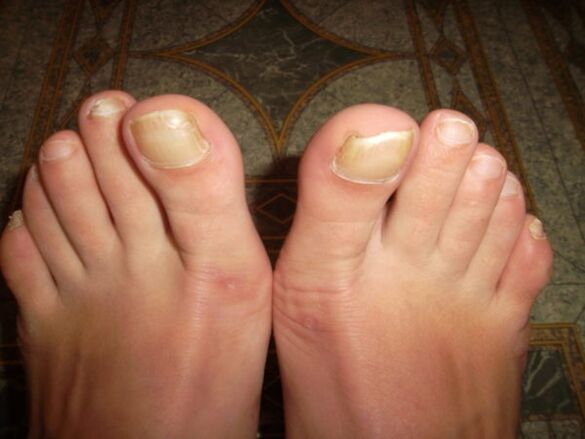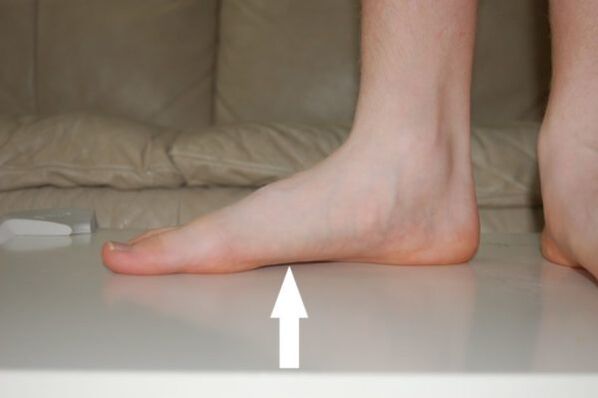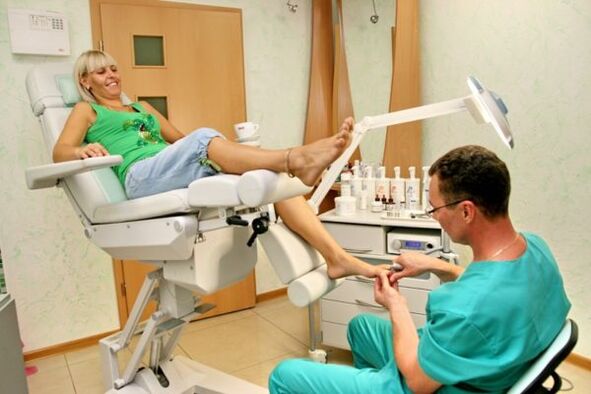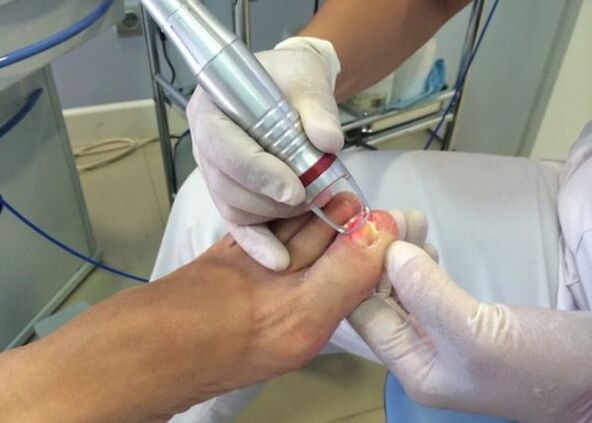
Stages of onychomycosis
- The original.At this stage, no obvious pathological deviations are observed: the changes remain external. The nail plates on the toes of the lower limbs lose their luster. White spots or streaks appear on the surface. Generally, nails look healthy and the person does not experience pain or discomfort. If onychomycosis is discovered at this stage, it can be removed quickly.
- Mild or gradual.The structure of the nail has undergone pathological changes. The nails take on a distinct yellowish tint, then fall off and disintegrate. The affected feet may also emit an unpleasant odor.
- Late or malnourished stage.Deep damage to the nails can occur. In this case, the infectious process moves from the thumb to other parts. The entire surface of the nail plate is affected by the fungus, peeling off the bed and becoming loose. The patient was troubled by severe itching. Pain and a throbbing sensation may occur when the affected area is pressed. Therefore, patients should not wear closed shoes.
%20Stage.jpg)
Causes of fungus in big toe
- contact with someone who is a carrier of a fungal infection;
- Ignore hygiene rules;
- Wearing someone else's shoes or narrow shoes that don't fit;
- weakened immune system;
- Going to places such as bathrooms, saunas, swimming pools or beauty salons where unsterilized utensils may be used;
- Injury to nails and surrounding skin;
- flatfoot;
- long-term use of antimicrobials;
- Hyperhidrosis (increased sweating of the feet);
- The presence of endocrine or immune pathology;
- Circulatory disorders, which are particularly important in elderly patients;
- intravenous poisoning;
- diabetes.

When should you see a doctor?

diagnosis
- Visually inspect the nail plate;
- Take a tissue sample from the affected nail;
- Culture examination - inoculation of material received from the patient onto a nutrient medium to determine the type of microorganisms affecting the nails.
Treating fungal nail infections in the early stages of development
- Varnish should be applied to the affected nail surface. It should be done twice a day for a total treatment period of one month. This product has contraindications and should only be used as prescribed by your doctor.
- The product is produced in the form of cream. The main active ingredient kills almost all types of fungi. The ointment is applied three times a day and the treatment lasts for about a month.
- A product in which plaster is impregnated with special ingredients. The adhesive tape is left on for 3 days and then removed. A special substance that coats the surface of the plaster helps soften the nail plate so it can be easily removed with a manicure tool or scissors.
- Medications containing substances that destroy fungi and prevent their proliferation. It is recommended to apply to the affected area 1-2 times a day. The duration of treatment depends on the condition of the nail plate and may be two to four weeks.
Advanced treatments for onychomycosis
- Triazole systemic antibiotic in tablet form. The active substance of the drug reaches the location of the pathogenic microorganisms and has a bactericidal effect.
- Imidazole drugs can inhibit and eliminate the growth of pathogenic microorganisms. The duration and dosage of treatment are determined by the attending physician. This product can cause adverse reactions.
- Allylamine drugs have bactericidal effects. The active substances gradually accumulate in the layers of the nail plate, which makes it possible to destroy even those fungi that are deeply located.
- Surgery.This method involves using sharp surgical instruments to lift the board and remove it from the bed. After surgery, use a bandage. Surgical methods are highly invasive and rarely used. Instead, a minimally invasive approach is used.
- Using chemicals to remove plaque, promotes rapid loss of affected nails. In this case, the problem area can be treated with a special solution, wait until the medication takes effect, and then use a product that helps quickly separate plaque from the nail bed.
- Laser Treatment.This is a modern, painless way to quickly remove onychomycosis. The laser acts on the sheet to bring it to a high temperature as quickly as possible. The beam penetrates deeply and neutralizes pathogens. This method is bloodless and completely safe as it does not cause burns.

traditional method
- Onion pulp.It is necessary to grate several onions and apply the resulting substance to the affected nail. Secure the top with a bandage. Leave on for 15-20 minutes and rinse.
- hydrogen peroxide.First, soak the affected foot in a water bath to soften the nail as much as possible. Then remove the top layer from the board. Soak a piece of gauze in hydrogen peroxide and wrap the affected nail around the phalanx of your finger, grasping the immediate area of the lesion. Leave on for 40-50 minutes. You can repeat this process up to two times per day.
- Apple cider vinegar.It is important to use natural products. Take 2 tablespoons of vinegar and add an equal amount of vodka and a tablespoon of glycerin. Dip a cotton swab into the resulting mixture and apply it to your nails for 15 minutes. Repeat 4 times a day.
The course and treatment characteristics of onychomycosis in children
- The board loses its natural pink color and gray or white spots appear on the surface;
- Uneven and nodular nail plates;
- Nails are brittle and brittle;
- The skin around your child's infected nail becomes red and swollen.
Treatment characteristics for pregnant and lactating women
Treatment for the Elderly
Precaution
- Wash your feet at least once a day;
- Wash socks and wear clean socks every day;
- If you sweat excessively, use a special foot deodorant;
- Wear shoes that are appropriately sized, not too tight, and should be washed daily;
- Use only personal hygiene products and manicure and pedicure tools;
- Please wear personal rubber shoes when going to the swimming pool, beach, or sauna;
- After going to the swimming pool or sauna, wash your feet with soap and water, and use pharmaceutical preparations for prevention if necessary.

















